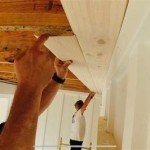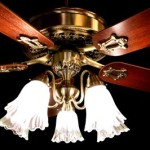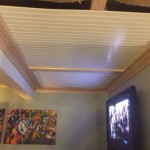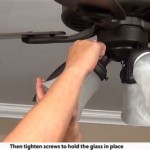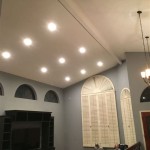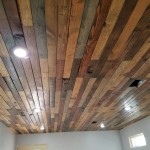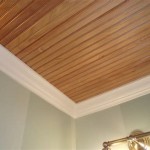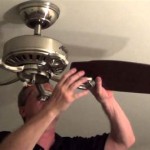Should I Insulate My Basement Ceiling For Sound?
Basement ceiling insulation for sound mitigation is a multifaceted decision involving considerations of noise levels, intended use of spaces above and below, budget, and existing construction. Determining whether or not to insulate a basement ceiling necessitates a thorough understanding of the potential benefits and drawbacks, as well as alternative options to achieve desired acoustic isolation.
Sound travels through structures in two primary ways: airborne transmission and impact transmission. Airborne transmission refers to sound waves traveling through the air, such as voices, music, or television sounds. Impact transmission refers to sound vibrations caused by direct contact with a structural element, such as footsteps, dropped objects, or furniture moving. Both types of sound transmission can contribute to noise pollution between floors of a home.
Insulating a basement ceiling primarily addresses airborne sound transmission. The insulation material acts as a barrier, absorbing and dissipating sound waves, thereby reducing the amount of noise that travels from the floor above into the basement. However, insulation alone may not be sufficient to address impact noise, which requires different strategies, such as resilient channels or specialized underlayments.
Understanding Acoustic Performance Metrics
Several metrics are used to quantify the acoustic performance of building materials and assemblies. Two of the most relevant for basement ceiling insulation are the Sound Transmission Class (STC) and the Impact Insulation Class (IIC). The STC rating measures a material's ability to reduce airborne sound transmission. A higher STC rating indicates better sound attenuation. The IIC rating measures a material's ability to reduce impact sound transmission. Similar to STC, a higher IIC rating signifies better impact noise reduction. Understanding these ratings is crucial when selecting insulation materials and construction methods.
Typical, uninsulated floor-ceiling assemblies often have relatively low STC and IIC ratings, resulting in significant noise transmission between floors. Adding insulation to the basement ceiling can significantly improve the STC rating of the assembly, reducing the perceived loudness of airborne sounds originating from the floor above. However, it's important to note that the overall acoustic performance will depend on the weakest link in the assembly. Gaps or flanking paths, such as those around pipes or ductwork, can compromise the effectiveness of the insulation.
When evaluating the suitability of insulation for sound control, it's important to consider the frequency range of the sounds you are trying to block. Different insulation materials have varying degrees of effectiveness at different frequencies. For example, some materials may be more effective at absorbing high-frequency sounds (e.g., speech), while others may be better at absorbing low-frequency sounds (e.g., bass). Examining the sound absorption coefficients of different insulation materials across a range of frequencies can help in making an informed decision.
Effective soundproofing often involves layering different materials and techniques to address both airborne and impact sound transmission. This approach acknowledges the complexity of sound and its propagation through structures. A combination of insulation, resilient channels, and damping materials may be necessary to achieve significant noise reduction.
Types of Insulation for Sound Control
Several types of insulation materials can be used to improve the sound insulation of a basement ceiling. Each material has its own properties and advantages, making it suitable for different applications.
Fiberglass insulation, available in batts or rolls, is a common and cost-effective option. It provides decent sound absorption, especially when installed with adequate density. However, fiberglass insulation is not as effective as some other materials at blocking low-frequency sounds. Its effectiveness is also dependent on proper installation to avoid gaps and compressions, which can reduce its sound-absorbing capacity.
Mineral wool insulation, made from rock or slag, offers better sound absorption than fiberglass. It is denser and has a more complex fiber structure, which helps to trap and dissipate sound waves more effectively. Mineral wool is also non-combustible and resistant to moisture, making it a durable and safe choice for basement applications.
Cellulose insulation, made from recycled paper, is an environmentally friendly option. It provides good sound absorption and can fill cavities completely, minimizing air gaps. Cellulose insulation is often treated with fire retardants, making it safe for use in residential buildings. However, installation can be more complex than with fiberglass or mineral wool, requiring specialized equipment.
Spray foam insulation, available in open-cell and closed-cell varieties, provides excellent air sealing and sound insulation. Open-cell foam is less dense and more effective at absorbing sound, while closed-cell foam is denser and provides better thermal insulation. Spray foam can fill even the smallest gaps and cracks, creating a continuous barrier against sound transmission. However, it is more expensive than other insulation options and requires professional installation.
Acoustic panels and tiles are specifically designed for sound absorption. They are often used in commercial spaces to reduce reverberation and improve speech clarity. Acoustic panels can be installed on the basement ceiling to further enhance sound control, especially if the primary goal is to reduce echo and improve the acoustic environment within the basement itself.
Specific Installation Considerations
Proper installation is paramount to maximizing the sound insulation benefits of any material. Gaps, compressions, and flanking paths can significantly degrade the acoustic performance of the ceiling assembly. Attention to detail during installation is critical.
When installing batt or roll insulation, ensure that it fits snugly between the joists, without any gaps or compressions. Cut the insulation to the correct size and shape, and carefully stuff it into any small openings around pipes or wires. Overlapping insulation layers can help to create a more effective sound barrier.
For spray foam insulation, hire a qualified contractor who is experienced in applying the material correctly. The contractor should ensure that the foam is applied to the proper thickness and that all surfaces are completely covered. Ventilation is crucial during and after spray foam application to allow the material to cure properly.
Resilient channels are metal strips that are attached to the joists before the drywall is installed. They create a mechanical break between the drywall and the joists, reducing the transmission of impact noise. Resilient channels are particularly effective at mitigating footsteps and other vibrations. They should be installed perpendicular to the joists and spaced according to the manufacturer's instructions.
Damping materials, such as viscoelastic compounds, can be applied to the framing members to reduce vibrations. These materials absorb energy and convert it into heat, dampening the structural vibrations. Damping materials can be particularly effective at reducing low-frequency noise.
Acoustic sealant should be used to seal any gaps or cracks around the perimeter of the ceiling and around any penetrations, such as pipes or wires. Acoustic sealant is a flexible, non-hardening compound that helps to prevent sound from leaking through these openings.
In addition to insulating the ceiling, consider addressing any other potential sources of noise transmission. For example, sealing air leaks around the perimeter of the basement can help to reduce the amount of noise that enters from outside. Upgrading windows and doors can also improve sound insulation.
Consider the placement of recessed lighting. Standard recessed lighting fixtures can create pathways for sound to travel through the ceiling. Use airtight recessed lighting fixtures and consider using soundproof enclosures around the fixtures to minimize noise transmission. Using LED lighting can also help since they generate less heat and require less ventilation, reducing the need for large cutouts in the ceiling.
When planning your basement ceiling soundproofing project, consult with an acoustic consultant or a qualified contractor to get expert advice. They can assess your specific needs and recommend the most effective solutions for your budget and situation. Their professional assessment can prevent costly mistakes and ensure that you achieve the desired level of sound insulation.
Consider the long-term maintenance of the insulation. Some insulation materials, such as fiberglass, can settle or degrade over time, reducing their effectiveness. Regular inspections can help to identify any areas where the insulation needs to be replaced or repaired. Maintaining proper ventilation in the basement can also help to prevent moisture buildup, which can damage the insulation and reduce its sound absorption properties.

Soundproofing Ceilings How To Soundproof A Ceiling

Nova Basement Remodeling Soundproofing In

Should I Insulate My Basement Ceiling And Walls Aire Serv

Best Insulation For Soundproofing Your Ceiling Renoviso

7 Ways To Soundproof A Ceiling That Really Work

What To Know About Soundproofing A Basement Ceiling

6 Est Ways To Soundproof A Basement Ceiling

How To Soundproof A Basement Ceiling The Only Guide You Ll Ever Need Better Soundproofing

Best Insulation For Soundproofing A Basement Ceiling Soundproof Expert

Soundproofing A Home Work Technical Details Two Teaching S
Related Posts

